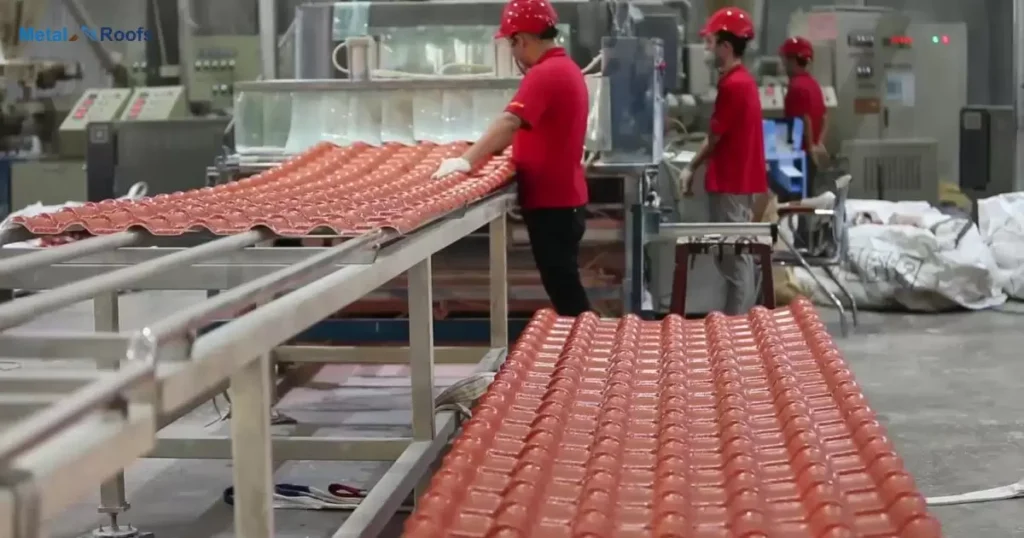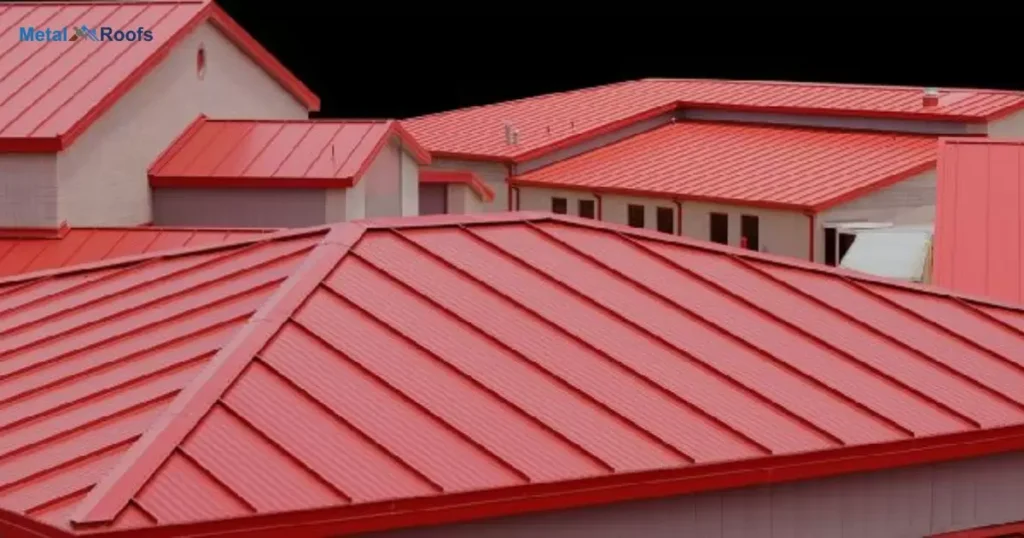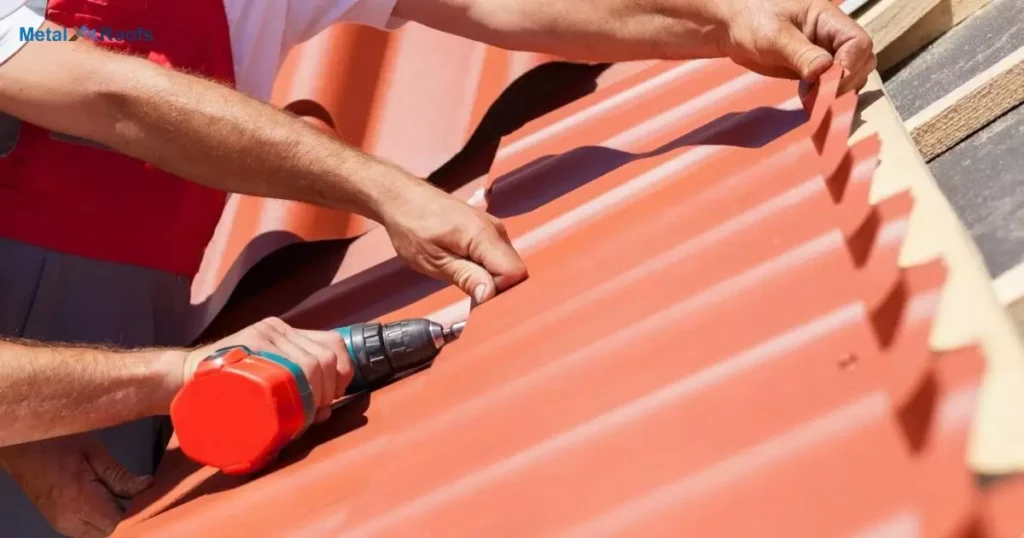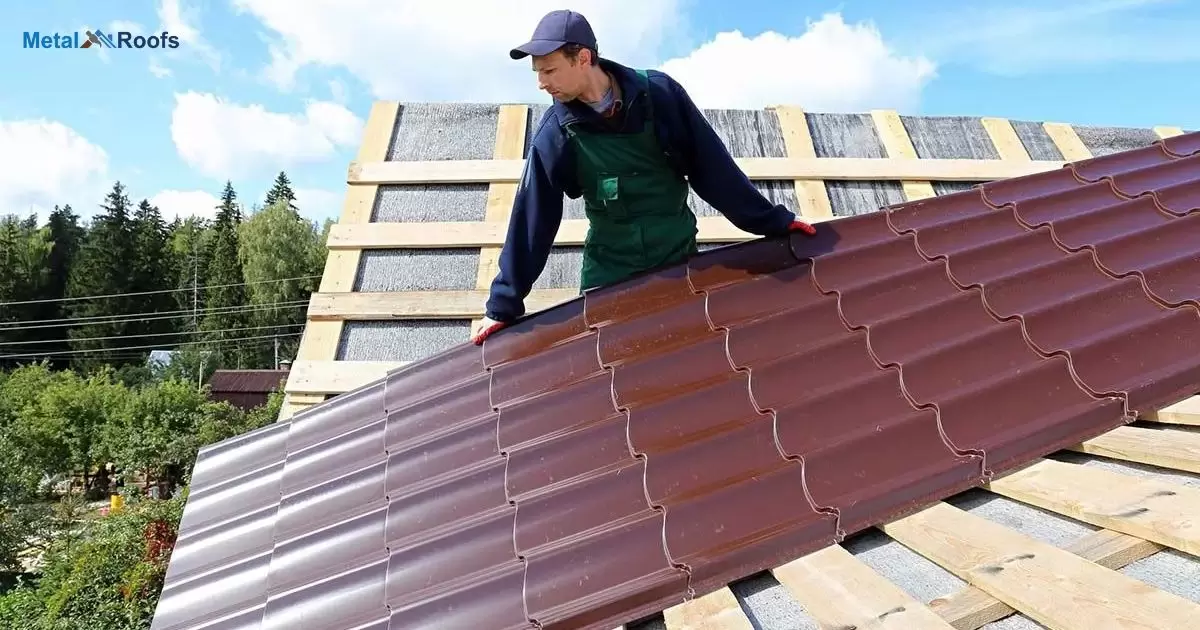Overlap on metal roofing is when one metal panel covers part of another, creating a secure barrier against leaks and weather damage. It’s like shingling a roof with metal sheets. This overlapping technique ensures water runs off smoothly and prevents it from seeping into the building.
How much overlap on metal roofing? It’s a critical question for ensuring your roof stays watertight. Proper overlap ensures effective drainage, preventing leaks and damage. Let’s explore the ideal overlap for your metal roof to keep your home safe and dry.
Getting the overlap on metal roofing just right is crucial for its durability, especially in structures like mansard roof framing. It ensures rainwater is directed away from vulnerable areas, preventing leaks. The importance of proper overlap, you can safeguard your home against potential water damage.
Key Takeaways
- Adequate overlap prevents leaks.
- Proper drainage is ensured.
- Understanding ideal overlap is crucial.
Metal Roof Overlap Sealant
Metal roof overlap sealant is vital for enhancing the waterproofing of your roofing system. It’s applied where metal panels overlap, sealing any gaps and preventing water intrusion. This sealant acts as an additional barrier against leaks, ensuring your roof remains watertight.
Choosing the right sealant is crucial for long-lasting protection. Look for a high-quality product specifically designed for metal roofs. Apply it carefully along the overlaps to create a tight seal, enhancing the resilience of your roof against harsh weather conditions.
Metal Roof Overlap Length
| Metal Roof Overlap Length | Purpose |
| 1 inch | Ensures proper water drainage |
| 2 inches | Provides extra protection against leaks |
| 3 inches | Recommended for high wind areas |
| 4 inches | Offers maximum resistance to weather |
Wondering about the ideal metal roof overlap length? It’s a key factor in ensuring your roof is watertight. The length of overlap determines how effectively rainwater is directed away, preventing leaks. Proper overlap length is crucial for maintaining the durability and integrity of your metal roof.
When determining the metal roof overlap length, consider factors like slope and climate. A steeper slope may require shorter overlaps to prevent water pooling, while areas with heavy rainfall may necessitate longer overlaps for better water runoff. Consulting with roofing professionals can help determine the optimal overlap length for your specific roofing needs.
Overlapping Metal Roof Panels

Overlapping metal roof panels is crucial for a watertight seal. Each panel covers part of the one beneath it, creating a barrier against leaks. This overlapping technique mimics traditional shingling but with metal sheets instead. It’s like building layers of protection for your home.
The importance of proper overlap is key. It ensures rainwater flows smoothly off the roof’s surface. Without enough overlap, water can seep through gaps, leading to potential damage. So, getting the overlap just right is essential for a durable and reliable metal roof.
How To Overlap Metal Roofing Horizontally
When overlapping metal roofing horizontally, start from the bottom and work your way up. Align the first panel flush with the edge of the roof, ensuring it’s square. Place the second panel on top, overlapping the first by the recommended amount. Use screws to secure both panels to the roof deck, placing them in the ridges for optimal support.
Continue this process across the entire roof, ensuring each panel overlaps the previous one correctly. Pay attention to the manufacturer’s recommendations for the required overlap distance. Once you reach the top of the roof, trim the final panel to fit if necessary, ensuring a snug fit against the ridge.
Roof Overlap Standard
Wondering about the roof overlap standard? It’s pivotal for roof durability. Adequate overlap prevents leaks, ensuring your home stays dry. Proper drainage is the goal, safeguarding against water damage. This standard is vital for maintenance. It’s about more than just aesthetics; it’s about functionality.
So, what’s the standard? Typically, it’s around two inches. This provides ample coverage. Specifics can vary based on factors like roof pitch and climate. Always consult with professionals for the best guidance.
Corrugated Metal Roofing Overlap

When it comes to corrugated metal roofing overlap, getting it right matters. This overlap ensures water doesn’t seep through the joints, keeping your home dry. By overlapping the panels correctly, you create a barrier against leaks and weather damage. Properly aligned corrugated metal roofing ensures rainwater flows off smoothly, reducing the risk of pooling and leaks.
How much overlap is needed on corrugated metal roofing is essential. It’s about creating a tight seal that prevents water infiltration. With the right overlap, you ensure the longevity and effectiveness of your corrugated metal roof. So, pay attention to this detail to protect your home from potential water damage.
How To Overlap Metal Roofing Vertically?
Overlap metal roofing vertically by aligning panels one above the other, ensuring a tight seal. Start at the eave and work upwards, placing each panel snugly against the preceding one. Ensure panels overlap in the direction of prevailing winds for optimal weather resistance.
Secure panels with fasteners along the overlap, maintaining a consistent spacing pattern. Check alignment regularly to maintain a uniform appearance and effective water shedding. Repeat the process until the entire roof is covered, paying attention to proper overlap to prevent leaks and ensure durability.
Metal Type Influence Overlap
The influence of different metal types on various aspects can be vast, ranging from industrial applications to cultural symbolism. Here’s a brief overview of how different metals influence different areas:
Industrial Applications:
Steel: Renowned for its strength and versatility, steel is a cornerstone material in construction, manufacturing, and infrastructure.
Aluminum: Lightweight and corrosion-resistant, aluminum is prevalent in aerospace, automotive, and packaging industries.
Copper: Excellent conductor of electricity and heat, copper is vital in electrical wiring, plumbing, and electronics.
Gold: Highly malleable and non-corrosive, gold finds use in electronics, jewelry, and as a financial reserve.
Silver: Known for its conductivity and antimicrobial properties, silver is used in electronics, medical equipment, and jewelry.
Cultural Symbolism:
Gold: Universally associated with wealth, luxury, and prosperity, gold has symbolic significance in various cultures and religions.
Silver: Represents purity, clarity, and reflection, often used in religious rituals and as a symbol of prestige.
Iron: Symbolizes strength, durability, and resilience, often associated with protection and warfare.
Copper: Associated with warmth, energy, and healing properties, copper has cultural significance in spiritual practices and folk remedies.
Platinum: Symbolizes rarity, purity, and endurance, often used to signify long-lasting commitment in jewelry, particularly in wedding rings.
Environmental Impact:
Steel: Although highly recyclable, steel production can have significant environmental impacts due to energy consumption and emissions.
Aluminum: Recycling aluminum requires significantly less energy than producing it from raw materials, making it more environmentally friendly.
Copper: Copper mining and processing can have environmental consequences, but recycling helps reduce the demand for new mining.
Gold: Gold mining often involves habitat destruction and toxic pollution, but efforts are being made to improve sustainability and ethical sourcing.
Silver: Like gold, silver mining can have environmental consequences, but silver’s role in various industries drives efforts for recycling and sustainable practices.
These are just a few examples of how different metals influence various aspects of our lives, industries, and cultures. Each metal has its unique properties and applications, shaping the world in different ways.
Tools Required For Overlap Installation

When installing overlap on your metal roofing, having the right tools is essential. First, you’ll need a quality drill to secure the metal panels in place. A sturdy ladder ensures safe access to the roof. Next, grab some metal snips for cutting panels to size with precision. A tape measure helps ensure accurate placement and alignment.
Don’t forget roofing screws to fasten the panels securely. Lastly, keep a caulking gun handy for sealing any gaps to prevent leaks. Having these tools on hand streamlines the overlap installation process. With a drill, ladder, metal snips, tape measure, roofing screws, and caulking gun, you’re equipped for success.
Overlap For Different Weather Conditions
Wondering about overlap for different weather conditions? It’s important to adjust the overlap of your metal roofing based on the climate. In areas prone to heavy rainfall or snow, a larger overlap provides added protection against water infiltration. On the other hand, in regions with high winds, a smaller overlap may be sufficient to prevent uplift and wind-driven rain.
In summary, tailoring the overlap of your metal roofing to suit the prevailing weather conditions is crucial. By understanding how different climates impact roofing performance, you can ensure your roof remains resilient against the elements.
Overlap For Different Installation Methods
Overlap for different installation methods varies depending on the technique used. For standing seam roofs, the panels overlap vertically, usually around 1.5 to 2 inches. This overlap creates a tight seal against water penetration. On the other hand, for corrugated metal roofing, the panels overlap horizontally, typically about 2 to 3 inches.
This horizontal overlap ensures water flows smoothly off the roof, minimizing the risk of leaks. The specific overlap requirements for each installation method is key to a successful and watertight roofing project.
Frequently Asked Questions
How Much Overlap On Corrugated Roofing?
How much overlap on corrugated roofing? It’s vital for a watertight roof, preventing leaks and ensuring effective drainage, safeguarding your home.
How Much To Overlap Corrugated Metal Roofing?
The ideal overlap on corrugated metal roofing prevents leaks and maintains durability.
How Much Should A Roof Overlap?
A roof should overlap enough to prevent leaks. Proper drainage is essential. Understanding the ideal overlap is crucial.
Conclusion
Ensuring the right overlap on metal roofing is paramount. It prevents leaks, safeguarding your home against water damage. By understanding and implementing proper overlap techniques, you can maintain a durable and watertight roof.
The key lies in adequate drainage and protection from the elements. Don’t overlook the importance of proper overlap. It’s the first line of defense against leaks and ensures your roof’s longevity.











